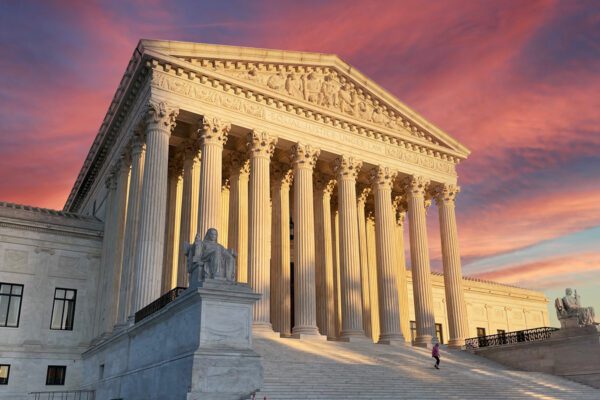Important Dates
- November 1, 2023: The EEOC is accepting comments on the proposed guidance until this date.
- January 1, 2024: A final version of the new guidance is expected to be issued after this date.
Highlights
- New EEOC Proposal: The EEOC has proposed new guidelines for enforcement of federal prohibitions against workplace harassment.
- Fair Employment Laws: Laws enforced by the EEOC include Title VII, the Americans with Disabilities Act and others. Most federal equal employment opportunity (EEO) laws apply to employers with 15 or more employees.
- Employer Impact: The new guidance does not create any new legal obligations but instead aims to clarify existing laws and policies.
In guidance issued on September 29, 2023, the U.S. Equal Employment Opportunity Commission (EEOC) explains how it may enforce fair employment laws against an employer when workplace harassment has been claimed or is suspected.
The proposed guidance includes updates on certain legal developments since the EEOC last issued similar guidance in the 1990s. These developments include the U.S. Supreme Court’s 2020 holding that Title VII of the Civil Rights Act (Title VII) prohibits discrimination based on sexual orientation and gender identity and the 2023 Pregnant Workers Fairness Act.
Once finalized, the proposed guidance will serve as a resource for EEOC enforcement staff investigating harassment claims and provide informal guidelines for employer compliance with existing legal requirements.
This Compliance Bulletin provides an abbreviated and summarized version of the EEOC’s proposed guidance.
Action Items
- Employers with 15 or more employees should become familiar with the new proposed guidance and monitor the EEOC’s website for the final version, which is expected to be released in substantially the same form as the proposed guidance near the end of 2023 or early in 2024.
- Meanwhile, employers should also review and revise their policies and procedures as necessary to ensure compliance with the proposed guidance.
Overview
In explaining how to evaluate whether harassment violates federal EEO law, the EEOC’s enforcement guidance focuses on the following three components of a harassment claim:
- Whether the conduct is based on the individual’s legally protected trait under the federal EEO laws;
- Whether the harassing conduct results in discrimination with respect to a term, condition or privilege of employment; and
- Whether a basis for holding the employer liable exists.
The guidance also addresses systemic harassment and includes links to additional EEOC resources on workplace harassment.
Protected Traits and Causation
Harassment is covered by the EEO laws only if it is based on an employee’s legally protected characteristics, which are also known as protected traits. The table on the following page provides a list of the traits protected under federal EEO laws, along with additional information about each trait.
Causation is established if the evidence shows that an individual was subjected to harassment because of the individual’s protected trait, regardless of whether the harasser explicitly refers to that trait.
Whether hostile workplace harassment is based on a protected trait will depend on the totality of the circumstances and must be evaluated based on the specific facts in a case. Nevertheless, certain principles may generally apply in hostile workplace harassment investigations. A few listed in the EEOC’s guidance are:
- Causation may be established in sexual harassment claims through explicit or implicit proposals of sexual activity, general hostility toward members of an individual’s sex, and comparative evidence showing how the harasser treated persons who shared an individual’s sex compared to the harasser’s treatment of others;
- Facially discriminatory conduct (such as actions that explicitly insult or threaten an individual based on a protected trait) is unlawful regardless of intent;
- Stereotyping need not be motivated by animus or hostility toward the stereotyped group;
- Additional considerations may include the following (and others):
- The context in which the conduct takes place or within a larger social context;
- Any link between facially neutral and facially discriminatory conduct;
- The timing between harassment and when the harasser learned of an individual’s protected status (such as pregnancy, sexual orientation, gender identity, religion or disability); and
- Evidence that shows differences in the conduct directed against individuals in different groups.
All retaliation claims, even if they potentially involve unlawful retaliatory harassment, are evaluated under the legal standard for retaliation. This is different from the legal standard for unlawful harassment based on a protected class.
| Protected Trait | Unlawful Conduct Examples |
| Race and color |
|
| National origin |
|
| Religion |
|
| Sex |
|
| Age (40 and older) |
|
| Disability |
|
| Genetic information |
|
Affecting a Term, Condition or Privilege of Employment
For an employer to be liable for workplace harassment based on a protected trait, the harassment must affect a “term, condition, or privilege” of employment. Whether hostile workplace harassment is based on a protected characteristic will depend on the totality of the circumstances and must be evaluated based on the specific facts in a case. As summarized in the table below, however, an action may meet this standard in one of two ways:
| Action | Unlawful if: | Key points |
| Explicit Change |
Linked to harassment based on a protected trait |
When an individual establishes that the employer made an explicit change to a term, condition or privilege of employment linked to harassment based on a protected trait, the employer is liable, and there is no defense. |
| Hostile work environment |
Both subjectively and objectively offensive; and |
For the subjective offensiveness determination:
|
For the objective offensiveness determination:
|
||
|
Either severe or pervasive |
Severity or pervasiveness of harassment depends on all circumstances, but relevant considerations may include:
|
The guidance also notes that the following, among other things, may contribute to a hostile work environment:
- Conduct that occurs in a work-related context outside of the regular workplace (such as sexist comments made during a video meeting or racist imagery that is visible in an employee’s workspace while the employee participates in a video meeting); and
- Conduct that occurs in a nonwork-related context but impacts the workplace (such as electronic communications using private phones, computers or social media accounts, if it impacts the workplace).
Employer Liability
As noted above, when an individual establishes that the employer made an explicit change to a term, condition or privilege of employment linked to harassment based on a protected characteristic, the employer is liable and has no defense.
However, in cases alleging a hostile work environment, one or more standards of liability may apply. This generally depends on the harasser’s relationship to the employer and the victim, as described below.
- An alleged harasser is considered a proxy or alter ego of the employer if the individual possesses such high rank or authority that the individual’s actions can be said to speak for the employer. Examples include sole proprietors and other owners; partners; corporate officers; and high-level managers.
- An alleged harasser is considered a supervisor if the individual is empowered by the employer to take “tangible employment actions” or has the actual or apparent power to recommend or otherwise substantially influence tangible employment actions against the victim.
- EEO laws also protect against harassment committed by any person other than a proxy/alter ego or supervisor, including other employees (such as co-workers, shift leads or other workers with limited authority over an individual) and any other person (such as independent contractors, customers, students, patients and clients of the employer).
For all employer liability purposes, the term “tangible employment action” means a “significant change in employment status” that requires an “official act” of the employer. Examples include hiring and firing; failure to promote; demotion; reassignment with significantly different responsibilities; compensation decisions; and decisions causing a significant change in benefits.
The table below provides an overview of how a harasser’s identity and tangible employment actions may determine employer liability.
| Harasser Identity | Employer Liability | Defense available | |
| Proxy or alter ego |
Employer is automatically liable. |
None |
|
| Supervisor |
Employer is vicariously liable, but the extent of damages may depend on whether conduct included a tangible employment action. |
If so, employer may not limit liability or damages. |
None |
|
If not, employer may limit its liability or damages if it can show it took reasonable prevention and prompt correction steps and the employee failed to minimize harm. |
“Faragher-Ellerth affirmative defense” |
||
| Anyone other than a proxy/alter ego or supervisor |
Employer liability depends on whether the employer was negligent. |
Employer is liable if it unreasonably fails to prevent or correct harassment but may limit damages. |
Defense based on victim’s unreasonable failure to report or minimize harm. |
Establishing the Faragher-Ellerth Affirmative Defense to Hostile Work Environment Liability
The table below provides an overview of the elements an employer must prove to successfully defend against liability or reduce damages for harassment that was committed by a supervisor but did not include a tangible employment action.
| Employer must show: | Key Points |
|
At minimum, employers should: |
|
The reasonableness of an employee’s actions depends on the particular circumstances and information available to the employee at the time of the actions.
Delayed complaints may reduce damages even if they would not eliminate liability altogether. However, an employee should not necessarily be expected to complain to management immediately after the first or second incident of relatively minor harassment. |
Systemic Harassment
Harassment can be systemic, subjecting multiple individuals to a similar form of discrimination. For example, evidence might show that the Black employees working on a particular shift were subjected to, or otherwise knew about, the same racial epithets, racial imagery and other offensive race-based conduct. In such a situation, evidence of widespread race-based harassment could be used to establish that each Black employee working on that shift was individually subjected to an objectively hostile work environment.
In some systemic harassment situations, the evidence may establish that the employer engaged in a “pattern or practice” of discrimination, meaning that the employer’s “standard operating procedure” was to tolerate harassment, creating a hostile work environment. To avoid liability in a pattern-or-practice case, employers must adopt a systemic remedy rather than only address the harassment of particular individuals. In addition, if there have been frequent individual incidents of harassment, then the employer must take steps to determine whether that conduct reflects the existence of a wider problem requiring a systemic response, such as developing comprehensive companywide procedures.
Additional Resources
The EEOC provides the following and other additional resources relating to workplace harassment:
- Home pages on Harassment, Sexual Harassment and Retaliation
- Select Task Force on the Study of Harassment in the Workplace
- Promising Practices for Preventing Harassment
- Promising Practices for Preventing Harassment in the Federal Sector
- Enforcement Guidance on Retaliation and Related Issues
Provided to you by The Horton Group, Inc.
Material posted on this website is for informational purposes only and does not constitute a legal opinion or medical advice. Contact your legal representative or medical professional for information specific to your legal or medical needs.



